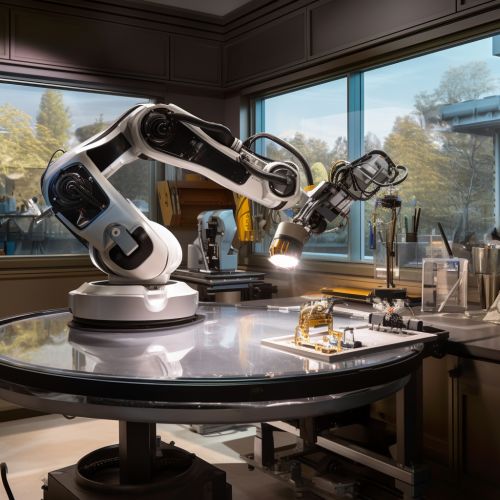Teleoperation
Introduction
Teleoperation refers to the operation of a machine or system from a distance. It is a subset of remote control methodologies that are specifically tailored to control distant, automated objects. Teleoperation is often used in situations where human intervention is necessary but the environment is dangerous or inaccessible.
History
The concept of teleoperation is not new. It dates back to the early 20th century, when the first remotely operated machines were developed. These early machines were simple and crude, but they laid the foundation for the sophisticated teleoperated systems we see today.
Principles of Teleoperation
Teleoperation works on the principle of sending commands from a control station to a distant machine or system. The operator at the control station uses input devices to send commands to the machine, which then executes those commands. The machine may also send feedback to the operator, allowing them to adjust their commands as necessary.
Components of a Teleoperated System
A typical teleoperated system consists of three main components: the operator, the control station, and the machine or system being controlled. The operator is the human who controls the machine. The control station is where the operator interacts with the machine, typically through a computer interface. The machine is the object being controlled, which could be anything from a simple robot to a complex industrial system.


Types of Teleoperation
There are several types of teleoperation, each with its own set of advantages and disadvantages. These include direct teleoperation, supervised teleoperation, and autonomous teleoperation.
Direct Teleoperation
In direct teleoperation, the operator has full control over the machine. They send commands to the machine, and the machine executes those commands without any autonomous decision-making. This type of teleoperation is often used in situations where precise control is necessary, such as in surgical procedures or delicate repair work.
Supervised Teleoperation
In supervised teleoperation, the operator sends high-level commands to the machine, which then decides how to execute those commands. This type of teleoperation is often used in situations where the environment is unpredictable or changes rapidly, such as in space exploration or disaster response.
Autonomous Teleoperation
In autonomous teleoperation, the machine operates independently of the operator, making its own decisions based on its programming and sensor input. The operator may still monitor the machine and intervene if necessary, but the machine is largely self-sufficient. This type of teleoperation is often used in situations where human intervention is impractical or impossible, such as in deep-sea exploration or mining operations.
Applications of Teleoperation
Teleoperation has a wide range of applications, from everyday tasks to complex scientific endeavors. Some of the most common applications include remote surgery, space exploration, underwater exploration, military operations, and hazardous material handling.
Remote Surgery
In remote surgery, a surgeon uses a teleoperated robot to perform surgical procedures on a patient. The surgeon controls the robot from a control station, allowing them to perform delicate procedures with precision and control.
Space Exploration
In space exploration, teleoperated robots are used to explore distant planets and moons. These robots are controlled by operators on Earth, who use the robots to collect data and perform experiments.
Underwater Exploration
In underwater exploration, teleoperated robots are used to explore the depths of the ocean. These robots can withstand the extreme pressures and temperatures of the deep sea, allowing scientists to explore areas that would be otherwise inaccessible.
Military Operations
In military operations, teleoperated robots are used for a variety of tasks, including reconnaissance, bomb disposal, and combat. These robots allow soldiers to perform dangerous tasks from a safe distance.
Hazardous Material Handling
In hazardous material handling, teleoperated robots are used to handle dangerous materials, such as radioactive waste. These robots allow workers to handle these materials safely, reducing the risk of exposure.
Future of Teleoperation
The future of teleoperation looks promising, with advances in technology opening up new possibilities. As robots become more sophisticated and autonomous, the role of the operator may change, shifting from direct control to supervision and oversight. Additionally, as virtual reality and augmented reality technologies improve, they may provide new ways for operators to interact with teleoperated systems.
